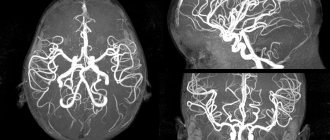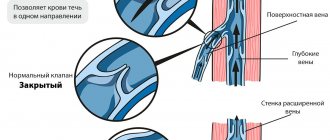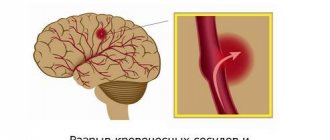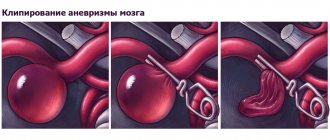One of the first places in the world is occupied by mortality from cardiovascular diseases. Vascular diseases, blockage of arteries and veins negatively affect the functioning of all organs of the body.
Arteries are blood vessels that carry oxygenated blood throughout the body. With the bloodstream, the necessary vitamins, hormones, and nutrients are carried to every part of the human body. Healthy blood vessels have smooth inner walls, and blood flows smoothly through them.
What is vascular blockage?
Blockage of blood vessels occurs due to various factors:
- thrombosis;
- injuries;
- the appearance of atherosclerotic plaques on the walls.
A thrombus is a blood clot that forms as a result of damage to the inner wall of an artery. The plaque is formed from substances circulating in the blood: calcium, cholesterol, fibrin. The body evaluates this formation as a defect and the process of thrombus formation begins. Unlike arterial thrombosis, venous thrombosis is not characterized by cholesterol deposition.
As deposits build up in the arteries, a condition called atherosclerosis occurs. This condition leads to narrowing and hardening of blood vessels.
Risk factors contributing to vascular blockage:
- increased cholesterol levels;
- high blood pressure;
- diabetes;
- smoking;
- obesity;
- sedentary lifestyle;
- genetic predisposition.
Symptoms of vascular blockage
Often, poor arterial patency does not cause any pain until a serious complication such as a stroke develops.
In other cases, especially when more than half of the artery is blocked, symptoms such as:
- discomfort, chest pain;
- severe shortness of breath;
- rapid heartbeat;
- dizziness;
- nausea;
- weakness;
- sweating
Due to a decrease in blood flow to the heart, chest pain (angina) appears, then coronary heart disease develops.
Peripheral artery blockage can cause:
- Leg pain.
- Poor healing of foot injuries.
- Gangrene.
If there is obstruction of the cerebral vessels, a person experiences headaches, constant or periodic, increased blood pressure, dizziness, vomiting, and unclear consciousness.
Consequences of the disease
Depending on the location of the damaged vessel, various complications arise. With obstruction in the extremities, nagging pain in the legs first appears, then trophic ulcers and tissue necrosis. Amputation is indicated, otherwise gangrene may develop. With prolonged ischemia of the heart vessels, myocardial infarction occurs. Long-term obstruction of blood vessels in the brain causes a stroke.
What it is
Blockage (occlusion) is an obstruction of blood vessels that appears suddenly, but is a consequence of long-term pathological processes in the tissues of the body. The main causes are blood clot formation and injury. Often, occlusion puts the body in a critical condition, requiring urgent medical intervention. To choose the right treatment strategy, it is necessary to determine the cause of the pathology.
If blood circulation weakens or stops in a section of the circulatory system, tissue oxygen starvation (ischemia) begins. Ischemia provokes tissue necrosis and other necrotic processes. To prevent a negative scenario for the development of the disease, medical care for blockage should be provided urgently.
Symptoms of vascular blockage
A feeling of discomfort occurs when the blockage is 50 percent or more. The set of symptoms depends on the location of the blocked fragment of the circulatory system. The following types of occlusions are considered the most dangerous:
- Blockage of heart vessels . Damage to the coronary vessels leads to the development of coronary artery disease. The initial signs of the disease are short-term attacks of angina. Their average duration does not exceed 10 minutes.
- Blockage of blood vessels in the legs . The disease manifests itself in pain and discomfort in the lower extremities. Often patients report decreased temperature of the legs, a predominance of a pale or bluish tint to the tissues.
- Occlusion of cerebral vessels . The severity of the pathology depends on the degree of blockage. The most common symptoms are recurrent or chronic headaches, high blood pressure, confusion, attacks of nausea, vomiting, and dizziness.
Consequences of the disease
Decreased blood permeability is a constantly progressive disease. Its development has different consequences for human life and health, but the symptoms and severity of the disease depend on the location of the outbreak. The initial stage of blockage of blood vessels in the extremities is characterized by pain and pulling sensations in the legs. If the obstruction continues for a long time, trophic ulcers appear and the tissues reach a state of necrosis. A patient diagnosed with necrosis is forced to agree to amputation of a limb in order to avoid the development of gangrene.
Ischemic heart disease contributes to the development of myocardial infarction. The higher the volume of the affected area due to obstruction, the more tissue is damaged.
Long-term occlusion of blood vessels leading to the brain also poses a danger to human health and life. Ischemia of brain tissue manifests itself in headaches and high blood pressure. If a person ignores these symptoms, they may miss the onset of an ischemic attack. This pathological condition progresses rapidly and often ends in a stroke.
Diagnostics
If poor patency of arteries and veins is suspected, the following studies are performed:
- Cholesterol analysis.
- Chest X-ray.
- CT scan.
- Ultrasound.
- Echocardiogram.
- ECG.
- MRI scan.
- Angiogram.
Magnetic resonance imaging (MRI) uses magnets and radio waves to produce images inside the body without a surgical incision. Unlike CT scans, MRIs do not use ionizing radiation. This is considered a safer alternative.
Treatment of vascular blockages
There are many options for preventing and treating blood clots. Depending on the severity of the condition and the patient's medical history, the doctor prescribes various methods.
Disease prevention:
Quitting bad habits, urgent lifestyle changes:
- a diet low in saturated fat and cholesterol, less sugar and simple carbohydrates, and high in fruits and vegetables;
- body weight loss;
- ban on smoking and alcohol;
- fitness classes;
- minimizing stress;
- lowering blood pressure and cholesterol using folk remedies;
- maintaining low blood sugar levels by avoiding large amounts of sweets, jam, and sweets.
Drug treatment
Some medications help prevent clogged arteries, such as:
- cholesterol-lowering medications;
- drugs that lower blood pressure;
- blood thinners, which reduce the chance of dangerous blood clots.
Surgical intervention.
In the later stages of the disease, drug measures do not help improve the situation and then surgical procedures are used:
Stenting
A small tube called a stent is placed in the artery to maintain good blood flow. A catheter is inserted through an artery in the leg to reach the heart, and a stent is inserted through the catheter into the area of the blockage.
Coronary artery bypass grafting
In this surgery, arteries from other parts of the body are moved to the site of blocked arteries to help the blood reach its target destination.
Balloon angioplasty
A device is used that pushes the plaque towards the side walls of the arteries, resulting in the opening of the vessel lumen.
But in advanced cases, especially when the vessels of the legs are damaged, it is not possible to save the limbs, amputation is indicated.
Vascular stenosis
Atherosclerosis
Diabetes
Ulcer
2578 12 August
IMPORTANT!
The information in this section cannot be used for self-diagnosis and self-treatment.
In case of pain or other exacerbation of the disease, diagnostic tests should be prescribed only by the attending physician. To make a diagnosis and properly prescribe treatment, you should contact your doctor. Vascular stenosis: causes, symptoms, diagnosis and treatment methods.
Definition
Vascular stenosis (Greek στενός - “narrow, cramped”) is a partial or complete persistent narrowing of the lumen of blood vessels with limitation or complete cessation of blood flow.
Causes of vascular stenosis
Depending on which vessels are affected, a distinction is made between stenosis of arterial vessels (aorta, arteries, arterioles) and stenosis of venous vessels (superior vena cava, inferior vena cava, veins, venules).
Vascular stenosis can be either congenital or acquired.
The main cause of acquired stenosis of the aorta, arteries of the lower extremities, and coronary arteries of the heart is atherosclerosis, a systemic metabolic disease with predominant damage to the vascular wall. The degree of narrowing of the artery and its length may vary. When blood pressure increases, the sclerotic inner layer of the vessel (endothelium) is easily damaged, as a result, the blood clotting process is activated and a blood clot is formed.
Blockage of the vessel can lead to ischemia or necrosis of the tissue or organ.
Risk factors for the development of atherosclerosis include:
- male gender;
- elderly age;
- smoking;
- dyslipidemia (violation of the normal ratio of blood lipids);
- diabetes,
- arterial hypertension,
- increased blood homocysteine;
- elevated levels of C-reactive protein (CRP);
- increased blood viscosity and hypercoagulable states;
- chronic renal failure.
Another disease leading to arterial stenosis is obliterating endarteritis (spontaneous gangrene) - a chronic disease of peripheral blood vessels (mainly affecting the arteries of the feet and legs).
Mostly men under the age of 25-40 are affected. Those at risk include smokers, as well as people with frostbite on their feet. Diabetic angiopathy, characterized by damage to both small vessels and large and medium-sized arteries, develops in patients with diabetes mellitus. In diabetic macroangiopathy, when large blood vessels are affected, changes characteristic of obliterating atherosclerosis are found in the wall of the great vessels. With microangiopathies, when small blood vessels are affected, thickening of the walls of microvasculature vessels (arterioles, capillaries, venules) occurs, which leads to a narrowing of the lumen and deterioration of the blood supply to organs and tissues.
Coarctation of the aorta (congenital segmental narrowing of part of the aorta that obstructs blood flow) occurs as a result of improper fusion of the aortic arches in the embryonic period. The length of the narrowing is usually 1-2 cm. The ascending aorta and branches of the aortic arch expand, their diameter increases significantly, and the walls of the arteries participating in the collateral circulation become thinner. Two modes of blood circulation are formed in the systemic circle: up to the point of obstruction to blood flow there is arterial hypertension, and distal (or below) there is hypotension.
Venous stenosis most often occurs as a result of direct damage to the vascular wall during catheter insertion and is then aggravated by the constant presence of a foreign body and mechanical irritation. Inflammation and activation of the blood coagulation system are observed in the vessel wall. These changes lead to proliferation (multiplication) of smooth muscle cells, thickening of the vein wall, and the formation of microthrombi.
Thus, risk factors for the development of central venous stenosis are: the use of a central venous catheter, infections associated with the installation of a catheter, and concomitant diseases.
Systemic vasculitis, tumor diseases and other causes of vascular stenosis are detected much less frequently.
Classification of the disease
According to the type of blood vessels:
- arterial stenosis;
- venous stenosis
Due to the occurrence:
- congenital;
- acquired.
By localization:
- Stenosis of the arteries of the lower extremities.
- Stenosis of the carotid (carotid) and cerebral arteries.
- Stenoses of the arteries of internal organs:
- renal arteries,
- mesenteric arteries etc.
- Aortic stenosis.
- Stenosis of coronary vessels.
By caliber of damage:
- stenosis of large vessels (aorta and its branches);
- stenosis of medium-diameter vessels;
- stenosis of small vessels (arterioles and capillaries).
Symptoms of vascular stenosis
Damage to the blood vessels of the brain is one of the main causes of mortality and disability in the population. 2/3 of ischemic strokes are associated with narrowing and deformation of the carotid arteries.
The risk of developing ischemic stroke is directly related to the degree of narrowing of the artery lumen.
Occlusion (closure) of the internal carotid artery leads to the development of stroke in 40% of cases.
Damages to the blood vessels of the brain can occur in several forms:
- The asymptomatic form is characterized by the absence of focal and cerebral neurological symptoms (impaired consciousness, headache, vomiting, slow pulse).
- Discirculatory encephalopathy is characterized by a predominance of general cerebral symptoms; focal neurological symptoms are absent or appear in a very mild form.
- Transient ischemic attacks manifest themselves in the form of transient disorders of cerebral circulation of the ischemic type and are accompanied by the appearance of focal neurological symptoms that resolve within 24 hours.
- The consequences of a minor stroke are an acute ischemic cerebrovascular accident with the development of neurological symptoms, which almost completely regress within a month as a result of conservative therapy.
- The consequences of a completed stroke are an acute ischemic disorder of cerebral circulation, accompanied by the development of persistent focal neurological and cerebral symptoms.
- Ischemic stroke is damage to brain tissue with disruption of its functions due to obstruction or cessation of blood flow.
Atheroslerotic lesion of the coronary arteries of the heart is manifested by angina pain, but can sometimes be perceived by the patient as discomfort, a feeling of heaviness, compression, tightness, distension, burning or lack of air.
Most often, the pain is localized behind the sternum or along the left edge of the sternum; it can radiate (give) to the neck, lower jaw, teeth, interscapular space, and less often to the elbow or wrist joints, mastoid processes. Pain with angina pectoris usually lasts from 1 to 15 minutes. Occurs during significant physical or emotional stress. After taking nitroglycerin or stopping the exercise, the pain stops. As angina progresses, an attack may occur with minimal exertion and then at rest.
The main symptom of renal artery stenosis is a persistent increase in blood pressure, which is difficult to respond to drug therapy. Approximately 90% of cases of renal artery stenosis are caused by atherosclerosis; in 10% of cases, stenosis occurs due to fibromuscular dysplasia, a group of diseases that affect the walls of the arterial vessel.
With renal artery stenosis, the blood supply to the kidney tissue is reduced, hormonal factors (renin-angiotensin-aldosterone system) that regulate blood volume and blood pressure are activated, and the development of chronic kidney disease is accelerated.
Stenosing damage to the vessels supplying blood to the abdominal organs (mesenteric arteries) is more often observed in middle-aged and elderly people and manifests itself as chronic abdominal ischemia syndrome, so the main complaint of patients is pain, which appears after 20-25 minutes. after eating, lasts 1-2 hours and usually subsides on its own. The pain can be localized in the epigastric region, directly under the xiphoid process, and radiate to the right hypochondrium or spread from the periumbilical region throughout the abdomen. Some patients note a feeling of constant heaviness in the abdomen, and vomiting is rarely observed.
Other symptoms of chronic abdominal ischemia are intestinal dysfunction, expressed by disturbances in its motor, secretory, absorption functions, and progressive weight loss.
Obliterating atherosclerosis of the aorta and main arteries of the lower extremities is more common in men over 40 years of age and deprives them of their ability to work. The process can be localized in large vessels (aorta, iliac arteries) or medium-sized arteries (femoral, popliteal).
Small atherosclerotic lesions of the arteries of the lower extremities may not be clinically manifest. With continued vasoconstriction, intermittent claudication occurs, which is manifested by discomfort or pain in the muscles of the lower limb during physical activity. Damage to the terminal aorta and iliac arteries can cause pain in the buttocks, thigh, and calf. Impaired patency of the femoral-popliteal segment is characterized by pain in the calf. Occlusion of the arteries of the leg usually causes pain in the calf, foot, absence or decrease in skin sensitivity in them.
With obliterating endarteritis, trophic disorders are observed (cracks, dry skin, brittle nails, ulcers), intermittent claudication, leg pain, necrosis and gangrene of the limb.
In the generalized form of obliterating endarteritis or atherosclerosis, not only the vessels of the extremities are affected, but the visceral branches of the abdominal aorta, branches of the aortic arch, cerebral and coronary arteries.
The clinical picture of diabetic macroangiopathy consists of the clinical picture of microangiopathy and atherosclerosis of the great vessels, but is characterized by a more severe and progressive course, often ending in gangrene.
The clinical picture of diabetic microangiopathy of the lower extremities is similar to that of obliterating endarteritis.
With coarctation of the aorta, symptoms depend on the severity of the disease. In the case of significant narrowing of the aorta, the parents of the newborn pay attention to the pale skin, sweating, and difficulty breathing of the child. In older children and adults, the symptoms are usually mild: high blood pressure, headache, cold extremities, nosebleeds.
Stenosis of the central veins is clinically manifested by swelling of the extremities, pain in them and trophic changes (cyanosis, thinning of the skin, cracks, ulcers, etc.).
Diagnosis of vascular stenosis
Diagnosis of the disease is based on the analysis of patient complaints, medical history data, clinical picture, data from laboratory and instrumental research methods.
To clarify the cause of vascular stenosis, the following may be recommended:
- clinical blood test: general analysis, leukoformula, ESR (with microscopy of a blood smear in the presence of pathological changes);










